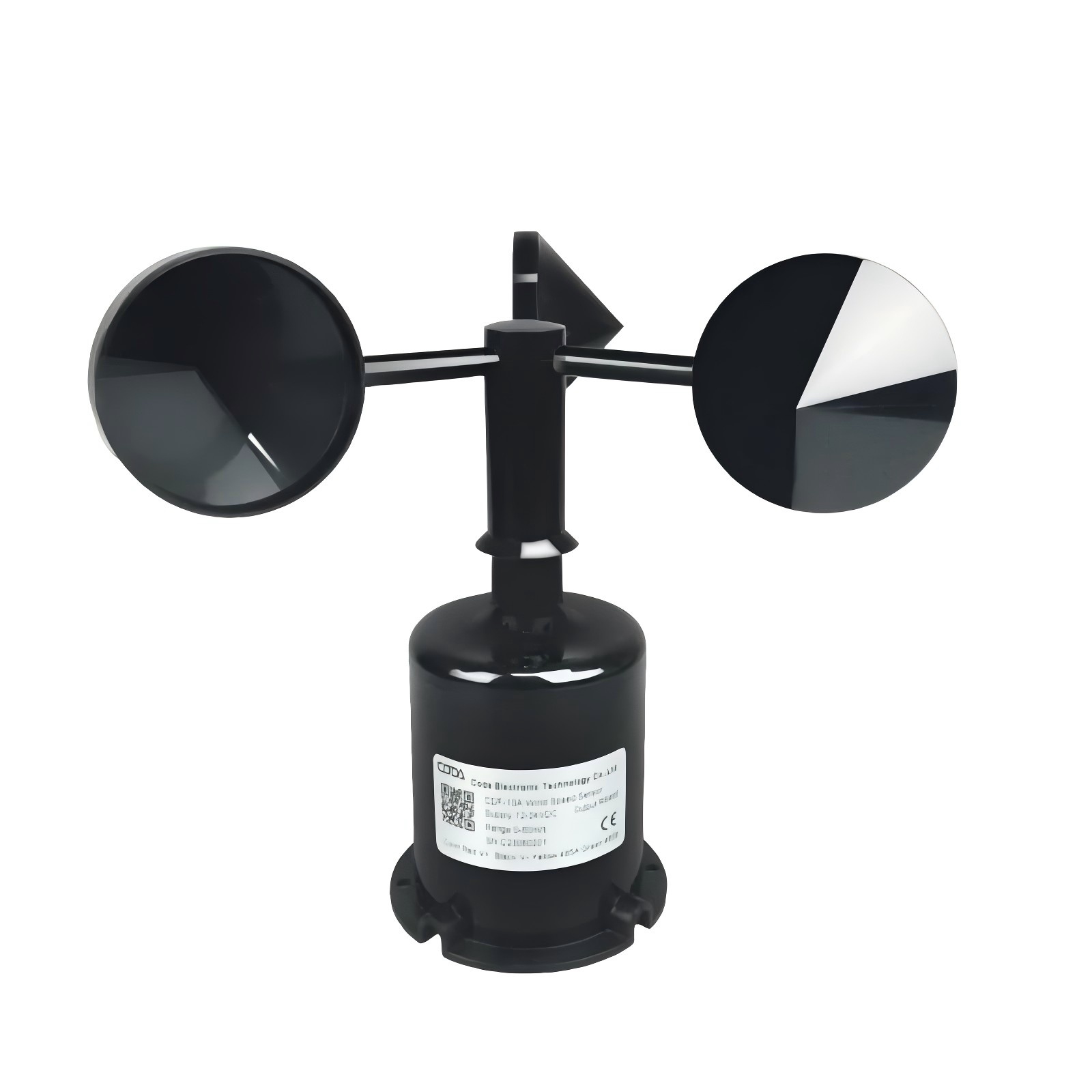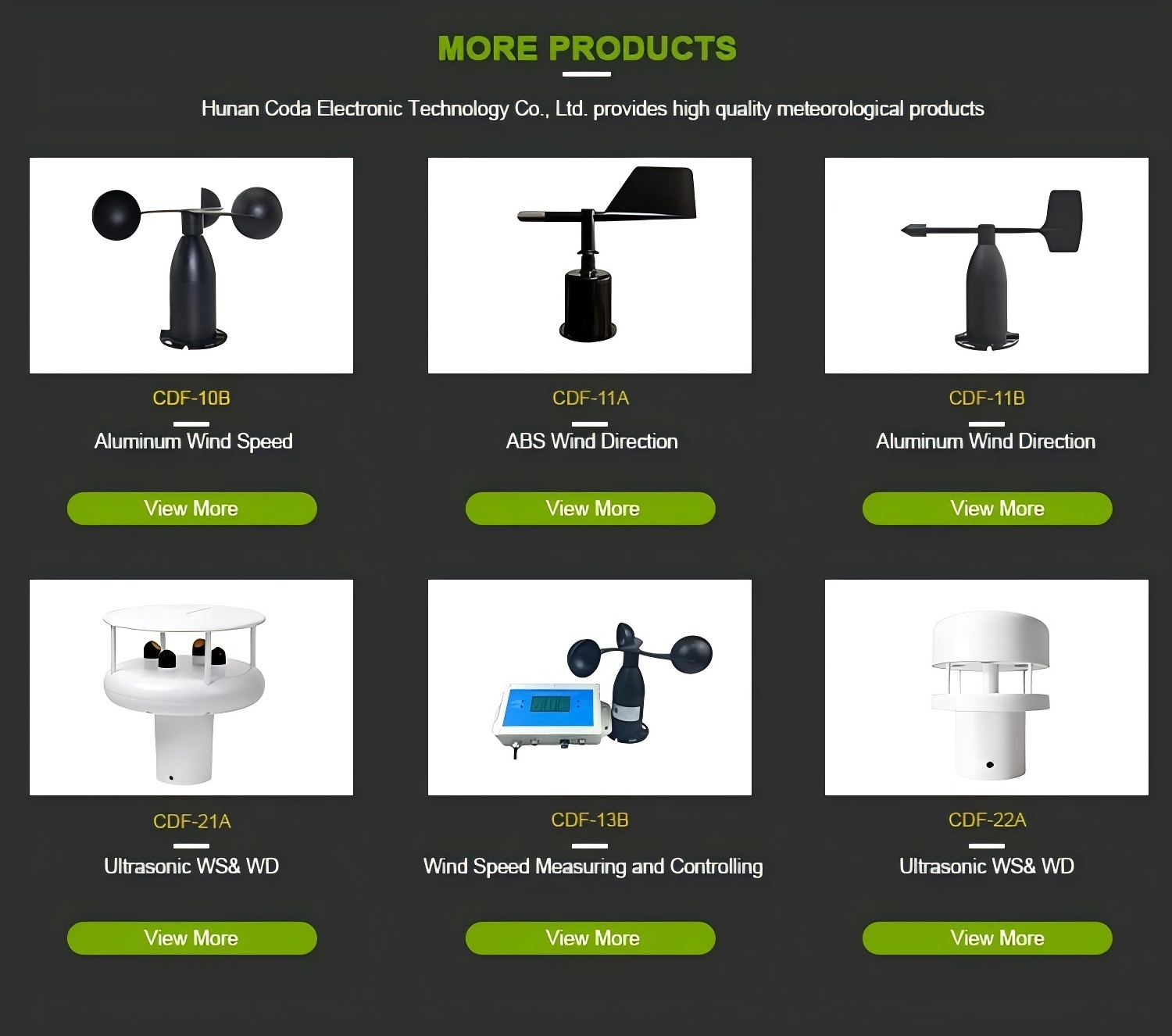A cup anemometer is one of the most commonly used instruments for measuring wind speed. It consists of three or four cups attached to horizontal arms that are mounted on a spindle. As wind blows, it causes the cups to rotate, and the speed of the rotation is directly proportional to the wind speed.
Cup anemometers are used in many industries. They help in meteorology and renewable energy. These devices provide important data for weather forecasting, air quality monitoring, and improving turbine performance.
In this article, we will look at the pros and cons of cup anemometers. This will help you see when and why they are good for certain uses.

Simple Design and Easy to Use
Cup anemometers are renowned for their simple construction, which makes them easy to operate and maintain. The rotating cups show wind speed clearly. This makes it easy for users to understand the data without complex setups or calibrations.
Low Cost
One of the most significant advantages of cup anemometers is their affordability. Cup anemometers are cheaper than other wind speed measuring devices.
This includes ultrasonic anemometers and laser Doppler sensors. Because of their low cost, they are a popular choice for projects on a budget. They are also used in industries that need to deploy many devices.
Durability
Cup anemometers are generally built to withstand harsh environmental conditions, which makes them highly durable. They are often used outdoors, like in wind farms, weather stations, and environmental monitoring. They can handle extreme temperatures, rain, snow, and wind.
Accurate Wind Speed Measurement
Cup anemometers provide a reliable and accurate measurement of wind speed within a certain range. They are effective for measuring wind speeds in the low to moderate range, typically between 0 and 75 meters per second. Their design allows them to notice small changes in wind speed. This is important for many weather-related uses.
Standard for Wind Energy Applications
Cup anemometers are the standard tool for measuring wind speed in wind energy. They are especially used for monitoring wind turbine performance and assessing sites. The simplicity, durability, and proven accuracy of these devices make them well-suited for such tasks.
Low Power Consumption
Because they rely on mechanical movement rather than electronic sensors, cup anemometers consume minimal power. This makes them perfect for remote monitoring systems. These systems work well where power is limited, like in rural or off-grid areas.

Susceptibility to Mechanical Wear
The mechanical nature of cup anemometers, with rotating parts, makes them prone to wear and tear over time. Friction, corrosion, and other environmental factors can lower the device's performance. This is especially true in harsh weather conditions. Routine maintenance and occasional part replacements are often necessary to ensure accuracy and reliability.
Low Sensitivity at Low Wind Speeds
Cup anemometers are great for measuring moderate to high wind speeds. However, they are not as sensitive at low wind speeds.
Their mechanical design needs a certain amount of wind to turn the cups. This means they may not work well for precise measurements in calm conditions. This limitation makes them less effective in low-wind areas or for tasks that need precise readings in light winds.
Limited Directional Sensitivity
Cup anemometers typically measure wind speed, but they are not capable of measuring wind direction. Some models have a wind vane to track direction.
However, the cup anemometer does not give directional information on its own. For applications that need wind direction data, a separate tool like a wind vane is required. This adds complexity and cost.
Inaccuracy at High Wind Speeds
Cup anemometers can become less accurate at high wind speeds (above their design limit). When wind speeds are too high for the instrument, the cups may spin too fast. This makes it hard for the sensor to collect accurate data. This can lead to measurement errors and unreliable results in extreme weather conditions, such as hurricanes or strong storms.
Size and Bulkiness
While not extremely large, cup anemometers are often more bulky compared to modern digital or ultrasonic anemometers. This can make installation and transportation more cumbersome, especially for mobile applications or where space constraints exist.
Sensitivity to Mechanical Obstructions
The rotation of the cups can be affected by debris, dirt, or ice accumulation on the anemometer. In areas with heavy dust, snow, or pollution, the accuracy of the device may degrade. Wind turbulence from nearby objects, like buildings or trees, can interfere with measurements. This can lead to errors in the readings.
Cup anemometers are a great tool for measuring wind speed. They are popular because they are reliable, simple, and cost-effective. They offer several benefits, including durability, low cost, and accurate wind speed measurements in moderate conditions.
Nonetheless, they possess certain restrictions. These include less sensitivity at low wind speeds, mechanical wear, and trouble measuring wind direction.
When choosing an anemometer for a specific application, it's essential to weigh these advantages and disadvantages carefully. Cup anemometers are great for many uses, especially in wind energy and weather monitoring. For special needs, like high wind speeds, accurate low-wind measurements, or directional data, you may need different options.
Consider looking at other types of equipment. Consider using ultrasonic or hot-wire anemometers for these situations.
Knowing these factors will help you choose the right wind measurement tool. This will improve both accuracy and reliability.
Discover how real-time weather station data impr
Discover how Automatic Weather Stations (AWS) ar
Discover how CODA gas sensors are the invisible
Contact: Molly
Phone: +86-17775769236
Tel: 86-0731-85117089
Email: molly@codasensor.com
Add: Building S5, Aux Square, Yuelu District, Changsha City, Hunan Province, China
We chat